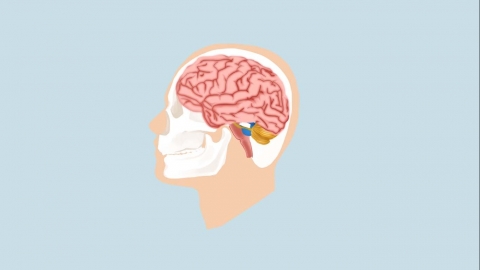How to Improve Swallowing Function After Cerebral Infarction
Generally speaking, cerebral infarction refers to cerebral infarction. Methods to improve swallowing function after cerebral infarction include the Mendelsohn maneuver, supraglottic swallow technique, combined cold and taste stimulation, breathing exercises, and transcranial magnetic stimulation. Details are as follows:

1. Mendelsohn Maneuver
The patient should sit or lie in a semi-reclining position. During swallowing, try to lift the larynx upward as much as possible. When feeling the Adam's apple reach the highest position, hold it for 3-5 seconds before performing the swallowing action. Each practice session should consist of 10-15 repetitions, and 3-4 sessions should be performed daily. This method can increase the amplitude and duration of laryngeal elevation, enhance airway protection during swallowing, and improve swallowing function.
2. Supraglottic Swallow Technique
The patient should first take a deep breath, then hold their breath and perform a swallowing action. Immediately after swallowing, cough. This can close the airway before swallowing, reducing the risk of food aspiration, and clear any possible residual food from the pharynx through coughing. Generally, each practice session should consist of 10-15 repetitions, and 3-4 sessions should be performed daily.
3. Combined Cold and Taste Stimulation
In addition to simple cold cotton swab stimulation, small amounts of flavored liquids such as vinegar or lemon juice can also be applied to the cotton swab to stimulate the tongue surface, oral mucosa, and posterior pharyngeal wall. Utilizing dual stimulation of temperature and taste can more effectively promote the recovery of the swallowing reflex and enhance oral and pharyngeal sensory functions.
4. Breathing Exercises
Breathing exercises can be performed using methods such as balloon blowing and pursed-lip breathing. When blowing a balloon, the patient should take a deep breath and then try their best to inflate the balloon. Each practice session should consist of 10-15 repetitions, and 3-4 sessions should be performed daily. For pursed-lip breathing, the patient should inhale through the nose with the mouth closed, then exhale slowly through pursed lips (like blowing a whistle), with the exhalation time being approximately twice the inhalation time. Good respiratory control helps coordinate breathing and swallowing actions during swallowing, reducing the risk of aspiration, and also enhances respiratory muscle strength, providing better power support for swallowing.
5. Transcranial Magnetic Stimulation
Transcranial magnetic stimulation is a non-invasive neuromodulation technique that applies magnetic fields to specific areas of the scalp to stimulate brain cortex regions related to swallowing function, modulating neuronal excitability and promoting neural function remodeling and recovery, thereby improving swallowing function. Treatment should be conducted five times per week for 20-30 minutes each session.
Patients need to remain patient and confident, undergoing rehabilitation training under the guidance of a physician. At the same time, family members should also provide adequate support and care to help patients better cope with the challenges caused by swallowing difficulties.










